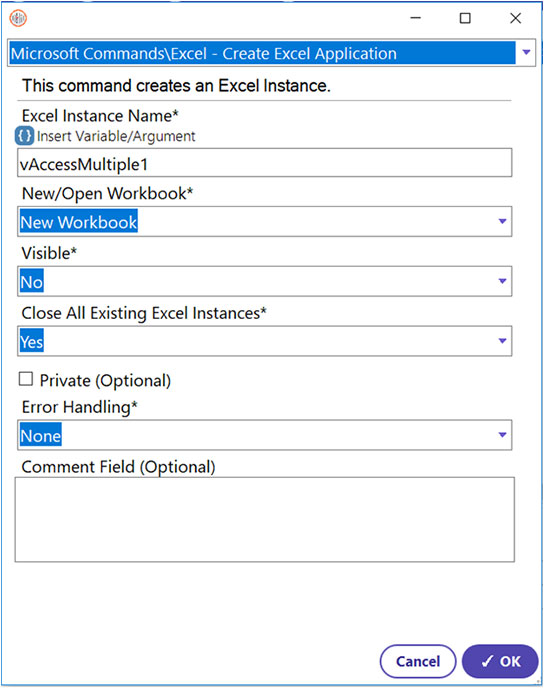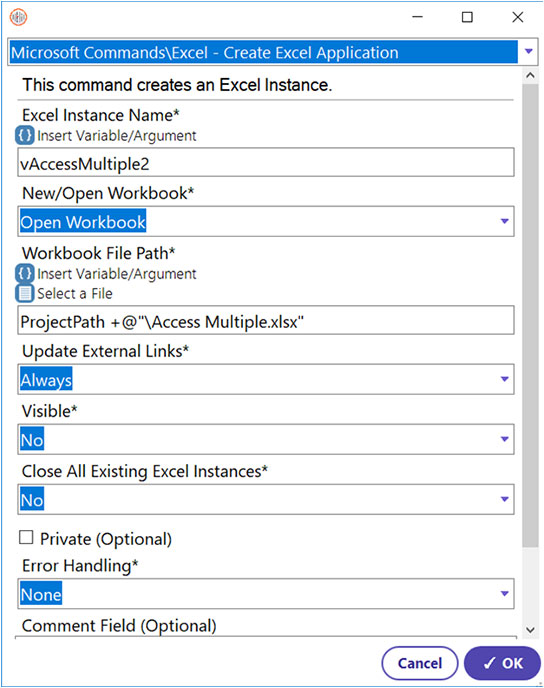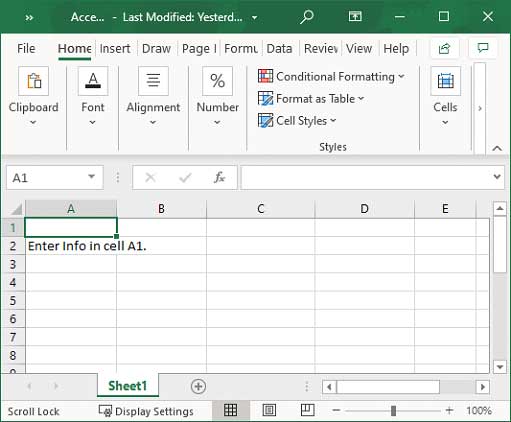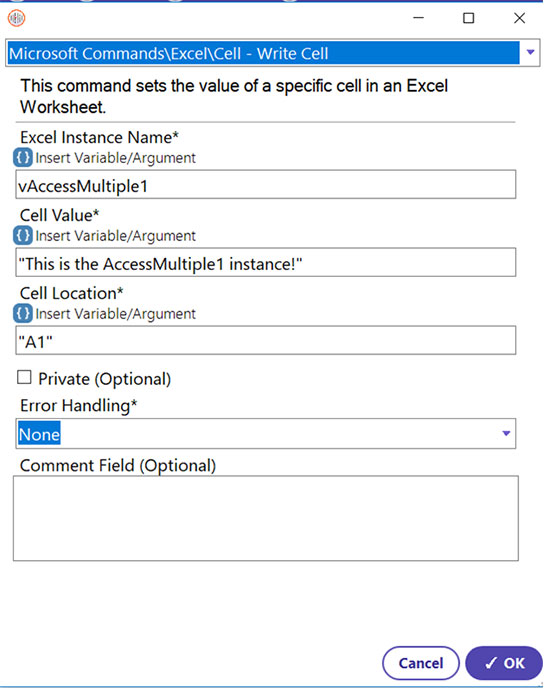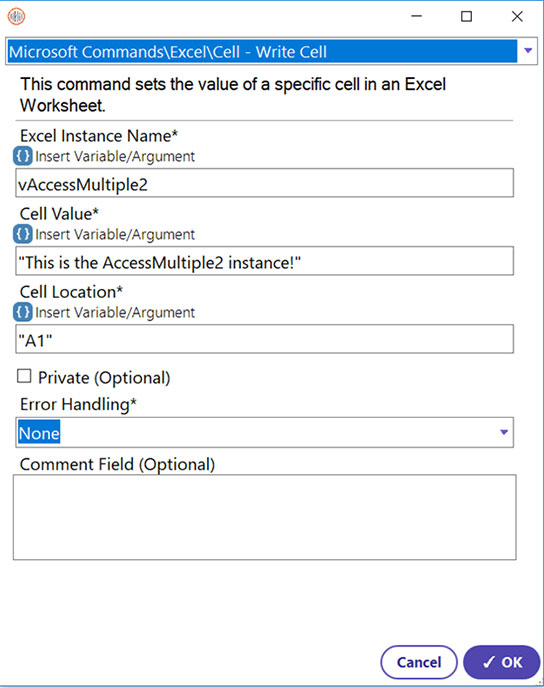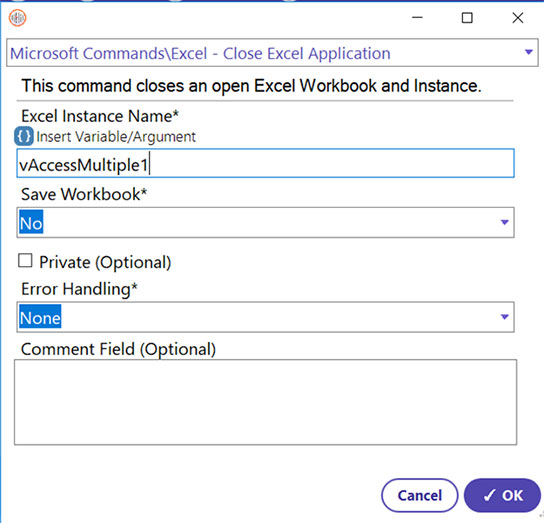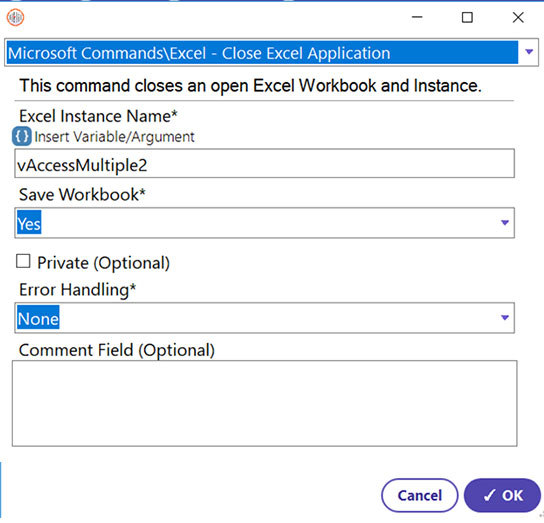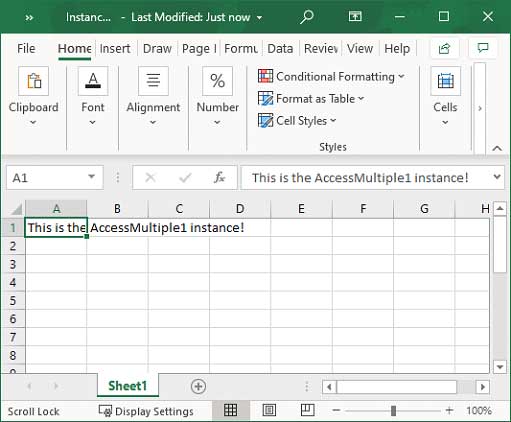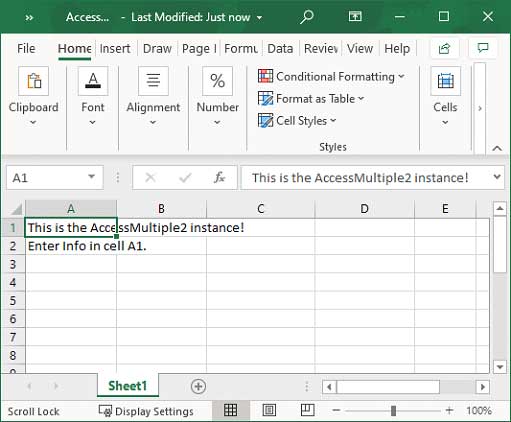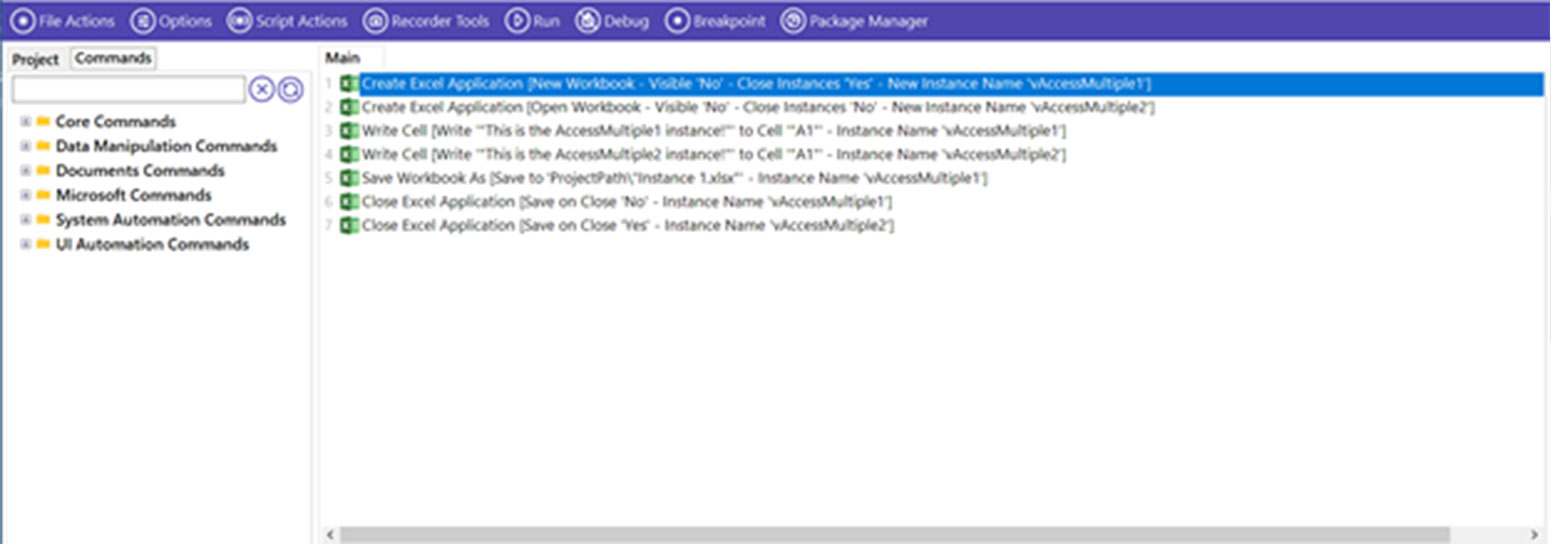Step 1: To access an Excel file throughout the entire process, a global instance must be created first so that automation can differentiate between different Excel windows (if multiple are created). The Create Excel Application command helps in performing this task. The first workbook will be a completely new file created just for this guide.
- Select the Create Excel Application command.
- Enter the Excel Instance Name. (This is the variable used to identify the Excel file opened by this command. The instance name for this workbook will be vAccessMultiple1 since this is the first workbook. This instance variable will be associated with this workbook only.)
- For the New/Open Workbook field, select the “New Workbook” option.
- Select the visibility criteria. (Yes, to make the Excel window visible during process execution. No was chosen for this guide.)
- Select whether to close all existing Excel instances. (Yes was chosen so that any open Excel files will be closed in order to prevent errors if the application is run multiple times.)
- Click OK
Note: If this automation is to be run multiple times, the Excel file created by this command will need to be deleted beforehand because later on the automation will attempt to save a file with the same name as a pre-existing file.
